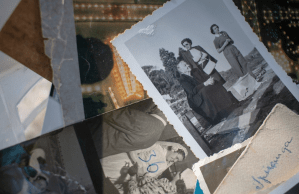A few years ago, I watched a heartbreaking movie that left me in a fit of tears. Maybe you’ve heard of it—it’s called My Sister’s Keeper. This film follows a young girl named Anna as she seeks medical emancipation from her parents who expect her to donate organs upon request to Kate, Anna’s older, leukemia-stricken sister. The gist is that Anna wants to feel like more than just a “savior sister.” She wants to live a normal, healthy life herself… which is put at risk every time she’s cut open on the surgery table.
This film explores some intense and complicated moral issues—which made it the perfect film for researchers at Aalto University to show the subjects of their study “Differential inter-subject correlation of brain activity when kinship is a variable in moral dilemma”. Upon editing the film and reframing the two sisters’ relationship, the team showed them a short piece of the film and found that familial relationships in movies affect the reactions to moral dilemma in a viewer’s brain to moral dilemma that arises between characters. And this might even carry over into our own lives.
To be more specific, these researchers showed about 25 minutes of the film My Sister’s Keeper to 30 women, who were told that the sisters in the film were either biologically related or that the youngest was adapted as a baby. The women were then asked to make a few different observations based on varying questions posed to them by the research team while their brain functions were measured with functional magnetic resonance imagining. For example: was a genetic relationship significant to the plotline of the story and Anna’s decision to forego giving her sister organs?
While 90% of participants reported that the genetic relationship between the sisters did not make a difference, the functional magnetic resonance imaging revealed huge differences in brain functioning between the two viewing conditions (such that the sisters are related or the youngest is adopted). “The impact on brain functions was amazingly high when we told about the difference in kinship between the sisters,” explains Mareike Bacha-Trams, Postdoctoral Researcher from Aalto. “The brain sees these two situations very differently,” despite what the participants have claimed.
The researchers found that when the viewers were led to believe that the sisters were genetically related, there was significant correlation between their brain activity in multiple regions known to control matters like morals and feelings: the insula, cingulate cortex, medial and lateral prefrontal cortex, superior temporal cortex, and superior parietal cortex. Based on this finding, moral expectations of the subjects are more similar when the sisters are believed to be related genetically.
These participants were also asked whose life they would rather save: a sister, a best friend, or a stranger? This question and these choices were posed in varying ways and more than 90% of participants said they’d choose to save their sister. These questions and the overarching study are important because we seek to know how we as humans observe interactions between people with a close relationship, explains professor and co-author of the study liro P. Jaaskelainen.
My Sister’s Keeper completely tore me apart. I sympathized with Anna, who just wanted to make her own medical decisions; the mom, who dedicated her life to keeping her sick daughter alive; Kate who didn’t want to be at the middle of it all; and the father, who just wanted all of his girls to be healthy and happy. But now I wonder if my emotions or opinions on the movie would have differed had the familial relations been different. According to this study, they just might have.
Sources: Aalto University “How the Brain Reacts to Difficult Moral Issues.” NeuroscienceNews. NeuroscienceNews, 27 October 2017.
<http://neurosciencenews.com/moral-issues-neuroscience-7824/>.
“Differential inter-subject correlation of brain activity when kinship is a variable in moral dilemma” by Mareike Bacha-Trams, Enrico Glerean, Robin Dunbar, Juha M. Lahnakoski, Elisa Ryyppö, Mikko Sams & Iiro P. Jääskeläinen in Scientific Reports. Published online October 27 2017 doi:10.1038/s41598-017-14323-x
















